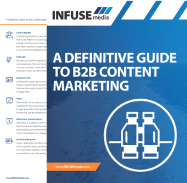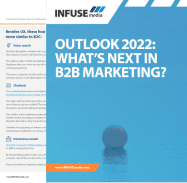What is Demand Generation Marketing? 6-Month B2B Playbook to Drive Brand Awareness at Scale
Demand generation marketing may seem like any other B2B marketing buzzword, however, it is a method which can futureproof your brand like no other. Demand generation poises your brand for long-term growth with outreach that continuously reminds audiences of your unique offerings.
In this guide, you will learn what is demand generation marketing and how to implement your own campaigns with our six-month playbook. Crafted by our demand generation experts, our playbook includes actionable advice to generate interest among prospects during two fiscal quarters.
What is demand generation marketing?
The goal of demand generation marketing is to build long-term awareness, and as a result, demand for your company’s products or services.
This is achieved by provoking discussions in an audience about their problems, promoting your brand as the solution to these problems, and priming purchases in your favour when they are ready to buy.
The utmost goal of demand generation marketing is to become a household name synonymous with high-quality service and authority in your industry, such as how Hoover has become for vacuum cleaners among B2C audiences.
Becoming a household name is harder in B2B, making brand building even more important to create awareness and interest. However, a few brands probably come to mind when you think of Client Relationship Management (CRM), which proves this feat is not impossible.
Demand Generation Marketing
VS Lead Generation Marketing
Often used interchangeably, demand and lead generation marketing are methods that complement each other, but have different end-goals:
Demand Generation Marketing:
Creates long-term growth by promoting brand awareness.
Lead Generation Marketing:
Incentivises prospects to fill in forms in exchange for content or tools, and thus, builds lead lists.
Lead generation is centred on capturing contact information of prospects. While demand generation marketing often results in this, with many campaigns having points of entry for prospects to convert into leads, the success of demand generation is not determined by capturing leads.
Many campaigns (such as promoting brand awareness by sponsoring an event), do not have a specific lead generation goal.
Learn all the differences in Demand Generation vs. Lead Generation, with a list of strategies for both methods
powerful demand generation methods
Successful B2B demand generation campaigns often involve multiple marketing tactics and channels in order to pique the interest of a target audience.
BELOW ARE FIVE COMMON METHODS TO GENERATE DEMAND AT SCALE:
1. Content syndication and co-marketing
Content syndication is a method to distribute brand content through publishing networks. There are dozens of B2B publishers available, each with different fees, guidelines for content, and crucially, access to specific audiences.
ITCURATED IS A B2B CONTENT SYNDICATION NETWORK COVERING 29 VERTICALS WITH A GLOBAL AUDIENCE OF 138+ MILLION DECISION MAKERS.
REQUEST A MEDIA KIT TO START CONNECTING YOUR CONTENT WITH YOUR IDEAL CLIENT PROFILE (ICP) ACCOUNTS AT SCALE

Content syndication can be inbound or outbound:
Inbound content syndication
Inbound includes all content syndication that draws prospects toward your website, such as:
Social media
Guest blogging
Paid syndication
Outbound content syndication
Outbound includes traditional outreach (pre-digital), as well as distribution methods that do not necessarily link back to your website.
Telemarketing
Cold emails
Learn more about the types of content syndication in this guide with tactics and metrics for success
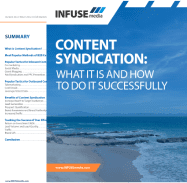
Co-marketing
This is a fairly popular and low-barrier content distribution method. Therefore, it is ideal for brands that are starting out and wish to generate demand at a low cost.
With co-marketing, your brand partners with another to launch a marketing campaign, blog post, tool, or event. The idea is to reduce spending and share the generated leads between all parties.
That being said, for co-marketing to work, it is important that you partner with a brand that not only shares your values, but also a similar audience. Obviously, the brand must also not be a direct competitor.
Read the CMO Guide to Content Syndication for an overview of co-marketing and KPIs to measure efficiency
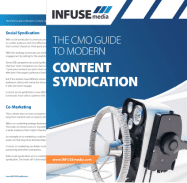
2. Events
With 67% of event professionals expecting in-person events to return to pre-pandemic levels within one or two years (according to American Express), events are poised to return to their former glory as a demand creation method for B2B companies.
In the case of an in-person event, this can include making a speech, joining round tables, or even distributing guides to attendees. Always try to bridge the offline-online gap by providing merchandise or flyers with scannable QR codes, as well as incentives in exchange for contact information (such as gift cards or free product demos).
The return of in-person events does not mean, however, that virtual events have not come to stay. According to Statista, 40% of events in 2022 will be virtual, which means a sisable chunk of the B2B events niche will remain online-only.
There are also hybrid events, which allow attendees to either commute or watch sessions from the comfort of their home.
Be sure to conduct research on the preferences of your audience and leads to assess which event type will be most effective, as well as take into account the geographic location of most of your leads. Remote and global brands have focused on digital events as they are the easiest for reaching target leads located in different areas at a lower cost.
Events can be a huge undertaking, which is why they can be organised with another brand (co-marketing), or you can sponsor an event to participate as a spokesperson if its audience is aligned with your ICP.
Consider also holding on-demand events for remote audiences. This allows attendees to consume your content at their own pace and can also result in reaching a greater amount of potential leads. While this technique sacrifices live interaction, any engagement you manage to encourage can be the perfect opportunity for creating related content to further nurture new prospects.
3. Community building
Building a community that fosters organic discussion is a key method to generate demand and keep your brand and unique offerings top-of-mind. Brands such as Salesforce and Oracle have reputable and well-established forums, where clients ask questions and get answers from other members, as well as staff.
Communities can either be hosted on your own website, or you can use social media channels like Reddit, LinkedIn or Facebook to create communities for clients and leads. While there are branded communities, it is possible to build a brand around a topic or join a well-established community as a member to plug your brand when appropriate.
Community building is high-effort (especially at launch) and a long-term task that has potential to generate huge ROI when it becomes established with enough members to organically promote brand awareness.
A community has achieved its goal when:
Members answer questions for other members
Members post content and the brand is not the only 'active voice'
Leads can be attributed to the community
Brand evangelists are active in the community and assist new clients with FAQs
Encourage community building by demonstrating how feedback is taken on to improve your client experience and incentivising brand champions who can help to moderate your forum.
4. Thought leadership and content marketing
Thought leadership has the power to prompt discourse and shape opinions in an audience. When done correctly, thought leadership generates demand as followers associate the value of thought leaders with their brand and products.
Therefore, establishing unique voices in your brand and allowing C-Suite members to promote the brand in their own words is a key demand creation tactic in B2B spaces.
Unlike B2C, where consumption is quicker and the decision making process is simpler; in B2B, buying committees may take months to consider purchases—making regular thought leadership essential for influencing their decision making in your favour.
As for content marketing, it is a promotional method that includes all media published by a company, and in the case of demand generation, the main focus is to promote long-term interest with the content being published. While gating is an option for boosting lead generation, this is not necessarily its primary focus.
This is why think pieces, reports, analyses, and guides shine in B2B demand generation marketing. Successful content marketing informs your audience and brings them value, positioning your brand as a helpful and reputable source in your niche.
However, it is important to note that approaching this strategy as 'content = lead generation' may often result in content not living up to its full potential in demand creation.
While lead generation may be attributed to ungated content marketing, this should not be its primary benchmark for success. Make sure content for demand has brand awareness as a key long-term goal from the start to not disappoint stakeholders later on.
5. Advertising and influencer marketing
Advertising is where demand generation marketing started, prior to the internet, and is perhaps one of the most reliable ways to generate demand for your business—especially if you expect quicker results and to drive awareness at scale.
Contrary to organic demand generation outreach, advertising requires paying for media space. However, one key benefit is the evolution of advertising tech, allowing you to pinpoint revenue to engagement easily to optimise an ongoing campaign quickly.
THERE ARE SEVERAL METHODS OF ADVERTISING AVAILABLE FOR B2B:
Pay-per-click (PPC)
This form of advertising is directly tied to performance marketing, in which you spend per engagement (or per click in this case). This makes PPC one of the easiest advertising methods for measuring ROI.
Google Ads is one of the most popular PPC platforms. It allows you to promote text ads on search listings for specific keywords, YouTube Ads, and Display Ads on its advertising network.
Targeted Display Ads
These ads use machine learning and algorithms to select the best placements for your ads across a proprietary publisher network.
The process has two main elements, the supply-side platform (SSP) and the demand-side platform (DSP):
SSP: Responsible for displaying the ad and also collecting data on users to select the best ad according to their preferences.
DSP: Selects ad space from the SSP and bids automatically according to the advertiser’s criteria and budget.
Targeted display ads have the benefit of working automatically and at scale, requiring less hands-on intervention compared to other advertising methods.
INFUSE has a Deep Media Nurturing service, which combines targeted display with exclusive partnership programs to reach your ideal audience at scale.
Read the Programmatic Media Buying for B2B whitepaper for a complete 10-step breakdown on how to get started
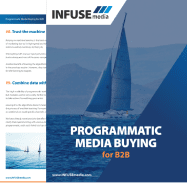
Influencer marketing
Commonly attributed to B2C, influencer marketing is gaining popularity in the B2B space, as the industry shifts toward a human-to-human (H2H) approach and leverages psychographics.
For B2B influencer marketing, you can either hire a third party to promote your products, or tap into talent at your business that already publishes 'influencer-worthy content'.
Before determining influencers for your brand, you should first define clear criteria to evaluate their potential. This combined with background checks and setting processes helps to reduce the risk of backlash.
Influencer screening checklist
Social media presence: The content they publish, engagement rates, topics covered, hashtags used.
Job history: Where they worked, which industries, comments from peers.
Red flags: Does the influencer’s behaviour align with brand values? Any signs of troublesome behaviour in the past?
Publications: Check the media that the influencer has published online and offline.
These four items can help gauge how appropriate an external or even internal influencer is for your brand, and if you should move forward with your strategy.
Influencer marketing supports B2B demand generation by promoting brand values and products through a trustworthy voice. It shares a similarity with B2C, since influencers in that industry also encourage purchases from their followers primarily based on trust.
The difference with B2B is that influencer marketing will likely act as a component of the buyer’s journey with less of an impact on the final decision making process rather than the sole reason for a purchase.
However, to fully leverage the power of B2B influencers, be sure to orchestrate strategies to capture and encourage their audience to enter your brand ecosystem, such as promoting a newsletter or a tool.
Content
In this example, the content in question is thought leadership on RevOps for small businesses. However, for the campaign to work, content must be granular in specificity and, therefore, targeting.
Start with a list of topics. Here are some for the RevOps campaign, to be penned by the CEO:
Ideally, you would build a list of topics to cover the whole campaign, which in this case would be six months. To ensure a consistent publishing cadence with set deadlines, assign members of your own team to create this content or outsource to fulfill this need.
Multiple formats should be considered as well. For this example, the campaign could include videos with the CEO, participation in a podcast, and an on-demand webinar. Do not forget to also plan infographics, slides, charts, ebooks, etc.— cover as many fronts as possible that suit your audience’s interest to avoid spending time creating content when the campaign is already running.
Channels and distribution
Once you have planned the content, it is time to determine the best method for promotion to ensure it reaches your target audience.
Accuracy in choosing the correct channels for distributing your content is essential for the success of your demand generation campaign —without the right channels, you will be unable to achieve the reach and visibility you require among your audience members.
For the RevOps example, the channels would be:
As for distribution, the platforms would be:
Discover the differences between omnichannel and multichannel marketing to decide which works best for your demand generation campaign
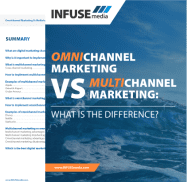
This combined feedback will guide your adjustments for the next step.
Brainstorming the changes to make to your campaign can be helpful, however, you should wait for the quarterly results before acting upon them.
This could indicate that your CTAs need some work. The solution would be to adjust and test the design and positioning of the CTAs for all content pieces, as well as landing pages. This also sets the stage for the next step.
BELOW ARE SOME IDEAS TO IMPROVE THE PERFORMANCE OF YOUR
DEMAND GENERATION CAMPAIGN:
Option three should only be reserved for critical situations. For example, this may be in the case that all KPIs are not being met and content can not be repurposed because the topics are not adequate for your audience, or you discovered your ICP is in an entirely new audience altogether.
Do your best to salvage demand generation campaigns when possible, check metrics and make changes as you gain feedback from your audience on their desires and pain points (as well as the best ways to address them).
The idea of the follow-up campaign is to shape the topics and pain points already discussed during the first six months to meet the interest of your leads and encourage their progress from the top of the funnel toward the middle or even bottom stage of the sales funnel.
In the case of developing the thought leadership campaign presented in this article, this could mean nurturing prospects with more data and actionable advice on RevOps solutions.
BELOW ARE SOME IDEAS OF FOLLOW-UP DEMAND GENERATION CAMPAIGNS
TO IMPLEMENT IN THIS LAST STEP:

Conclusion
Demand generation is a long-term strategy to promote lasting awareness and interest in a brand and its solutions among target audiences. Whilst lead generation is possible, this is not the key indicator of the success of a demand generation marketing campaign.
Demand generation is not a sprint, it is a marathon. Reach the finish line by keeping a steady, reliable pace with your marketing strategy, outreach, and content.
Follow the six month process to generate demand as explored in our expert playbook to set a foundation for growth in your business. Measure engagement to assess campaigns and adapt for the better with direct feedback to overcome challenges as they occur.
TOGETHER, LET’S BUILD A CAMPAIGN THAT EXCEEDS YOUR MARKETING GOALS
Our INFUSE Demand Strategists are available on your schedule to plan a unique strategy informed by your challenges. Build a campaign that generates demand performance, creates a steady pipeline of incoming qualified leads, and makes your ROI scalable and predictable.
Achieve growth with true demand for your brand by talking with our seasoned experts in planning, executing, and tracking campaigns for Fortune 500 companies worldwide.

